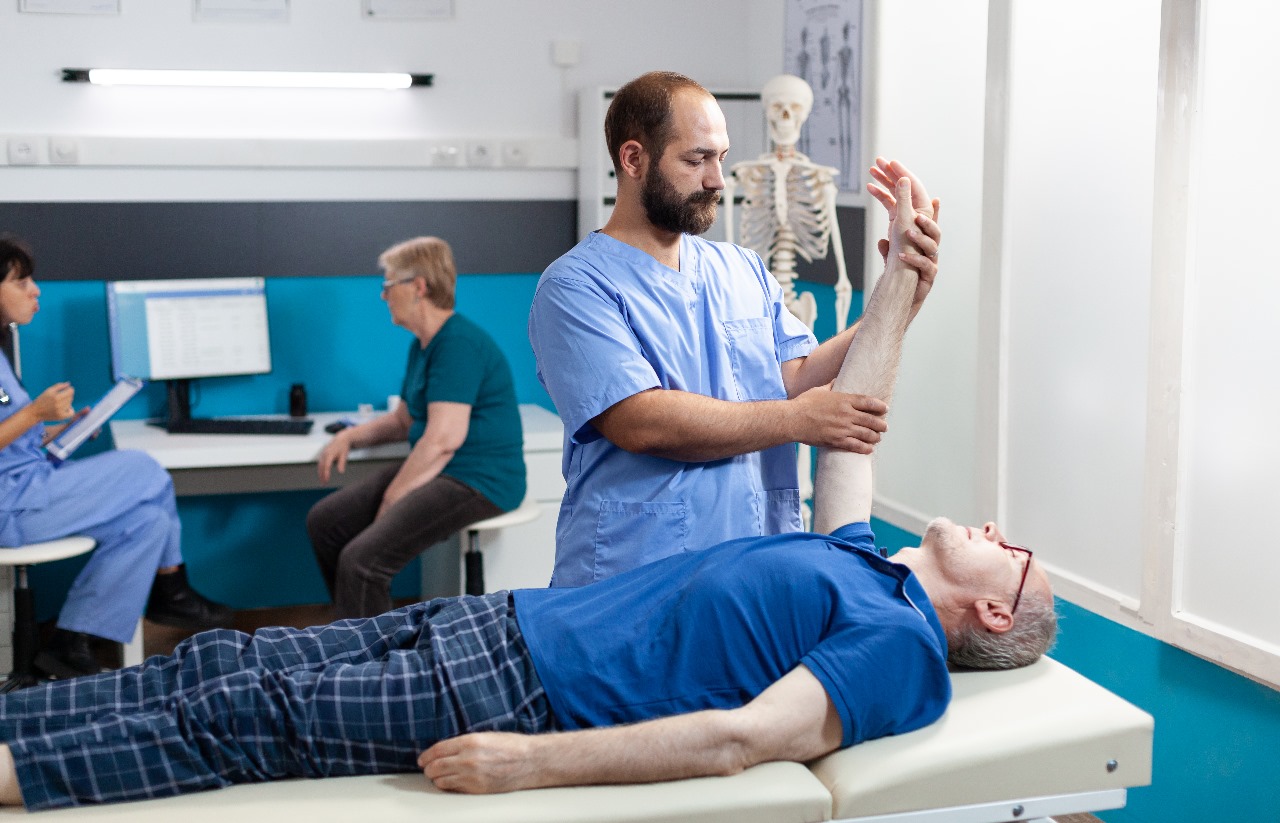Precautions You Should Take Before visiting an orthopedist.
What is Orthopedic Therapy?
Orthopedic therapy, also known as orthopedic physical therapy, is a specialized branch of physical therapy focused on diagnosing, managing, and treating disorders and injuries of the musculoskeletal system. This includes bones, muscles, joints, tendons, ligaments, and connective tissues. Orthopedic therapists use a variety of techniques and exercises to help patients recover from injuries, reduce pain, and improve mobility and functionality.

Conditions Treated by Orthopedic Therapy
Orthopedic therapy can address a wide range of musculoskeletal conditions, including:
• Injuries: Such as sprains, strains, fractures, and dislocations.
• Joint Disorders: Including arthritis, bursitis, and tendinitis.
• Spinal Conditions: Such as herniated discs, sciatica, and scoliosis.
• Post-Surgical Rehabilitation: For recovery following orthopedic surgeries.
• Chronic Pain: Including conditions like fibromyalgia or chronic lower back pain.
• Sports Injuries: Such as rotator cuff injuries, ACL tears, and tennis elbow.
Benefits of Orthopedic Therapy
The benefits of orthopedic therapy are extensive and include:
• Pain Relief: Effective management of both acute and chronic pain.
• Improved Mobility: Enhanced range of motion and flexibility.
• Strength Building: Increased muscle strength and endurance.
• Functional Recovery: Better ability to perform daily activities and work tasks.
• Injury Prevention: Reduced risk of future injuries through education and strengthening exercises.
• Enhanced Quality of Life: Improved overall physical function and well-being.
Must take precautions before visiting an orthopedist
When planning to visit an orthopedist, taking certain precautions can ensure you get the most out of your appointment and help in managing your orthopedic condition effectively. Here are some key steps to follow:
1. Gather Medical History: Compile your medical records, including previous diagnoses, treatments, surgeries, and any relevant imaging studies (X-rays, MRIs, CT scans). Note any allergies, current medications, and dosages, including over-the-counter drugs and supplements.
2. Prepare a Symptom Diary: Document your symptoms, noting their onset, duration, intensity, and any activities that exacerbate or alleviate them. Keep track of any patterns or triggers related to your pain or discomfort.
3. List Questions and Concerns: Write down questions you have about your condition, treatment options, potential side effects, and expected outcomes. Note any concerns about your ability to perform daily activities or work-related tasks.
4. Know Your Family History: Be aware of any family history of orthopedic conditions, as this information can be relevant to your diagnosis and treatment plan.
5. Wear Comfortable Clothing: Dress in loose, comfortable clothing that allows easy access to the affected area for examination. Consider wearing athletic shoes if you’re dealing with a lower extremity issue, as the doctor might want to observe your gait.
6. Bring a Companion: If possible, take a friend or family member with you. They can provide support, help remember information, and ask additional questions.
7. Check Insurance Coverage: Verify that the orthopedist is covered by your insurance plan. Understand your benefits, including any co-pays, deductibles, and the need for a referral from your primary care physician.
8. Follow Pre-Appointment Instructions: Adhere to any specific instructions provided by the orthopedist’s office, such as fasting or avoiding certain medications before the visit.
9. Prepare for Physical Activity: Be ready for a physical examination that might include movement tests, so make sure you’re physically prepared to participate.
10. Review Office Policies: Familiarize yourself with the office’s policies on cancellations, rescheduling, and paperwork requirements.
By taking these precautions, you can ensure a productive and informative visit to the orthopedist, leading to a better understanding and management of your orthopedic health. You can Visit our Orthopedic therapists also.
In conclusion, taking the time to prepare thoroughly before visiting an orthopedist can greatly enhance the effectiveness of your consultation and subsequent treatment. By compiling a detailed medical history, documenting your symptoms, preparing questions, and understanding your insurance coverage, you can ensure a more accurate diagnosis and personalized care plan. Remember to wear comfortable clothing, possibly bring a companion for support, and follow any pre-appointment instructions provided by the orthopedist's office. These steps not only facilitate a smoother appointment process but also empower you to take an active role in your orthopedic health and recovery. By being proactive and well-prepared, you can optimize your treatment outcomes and improve your overall quality of life.
